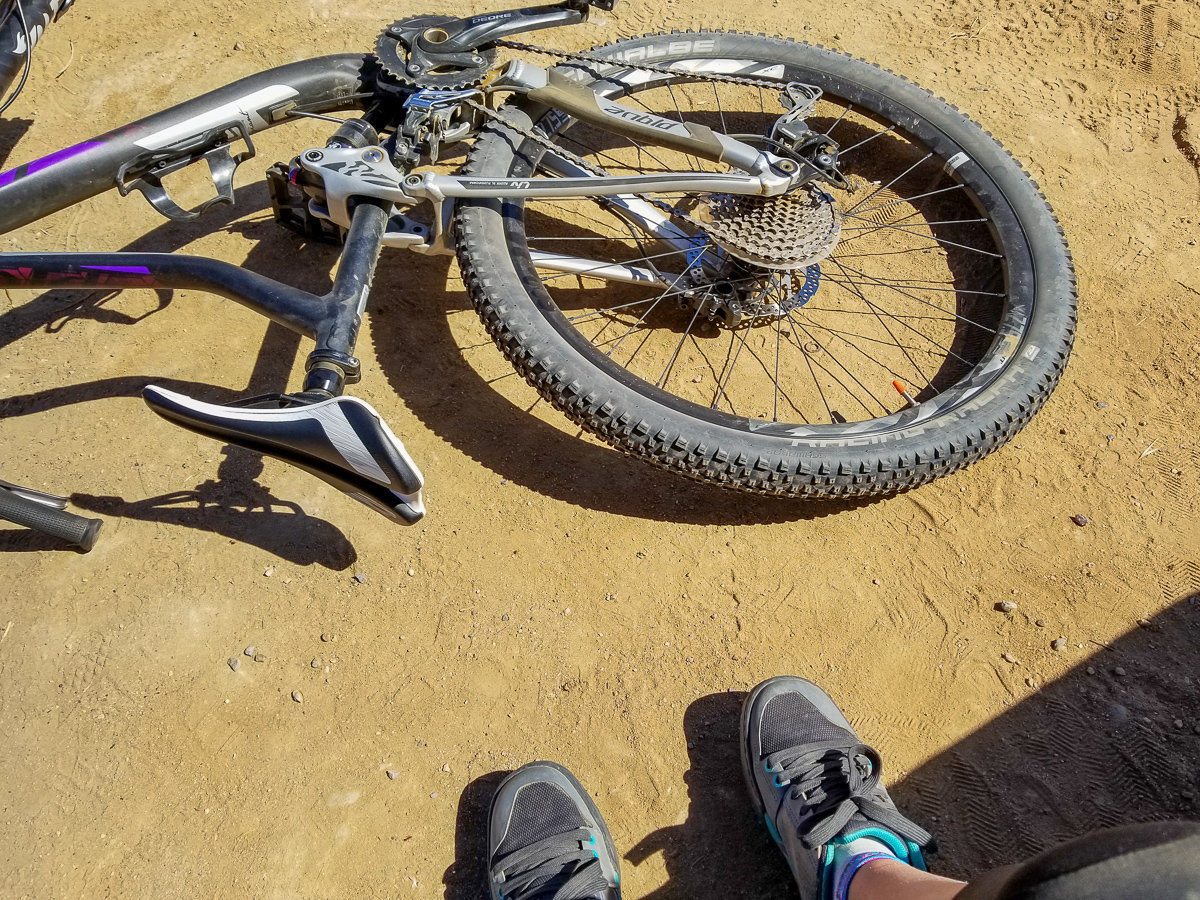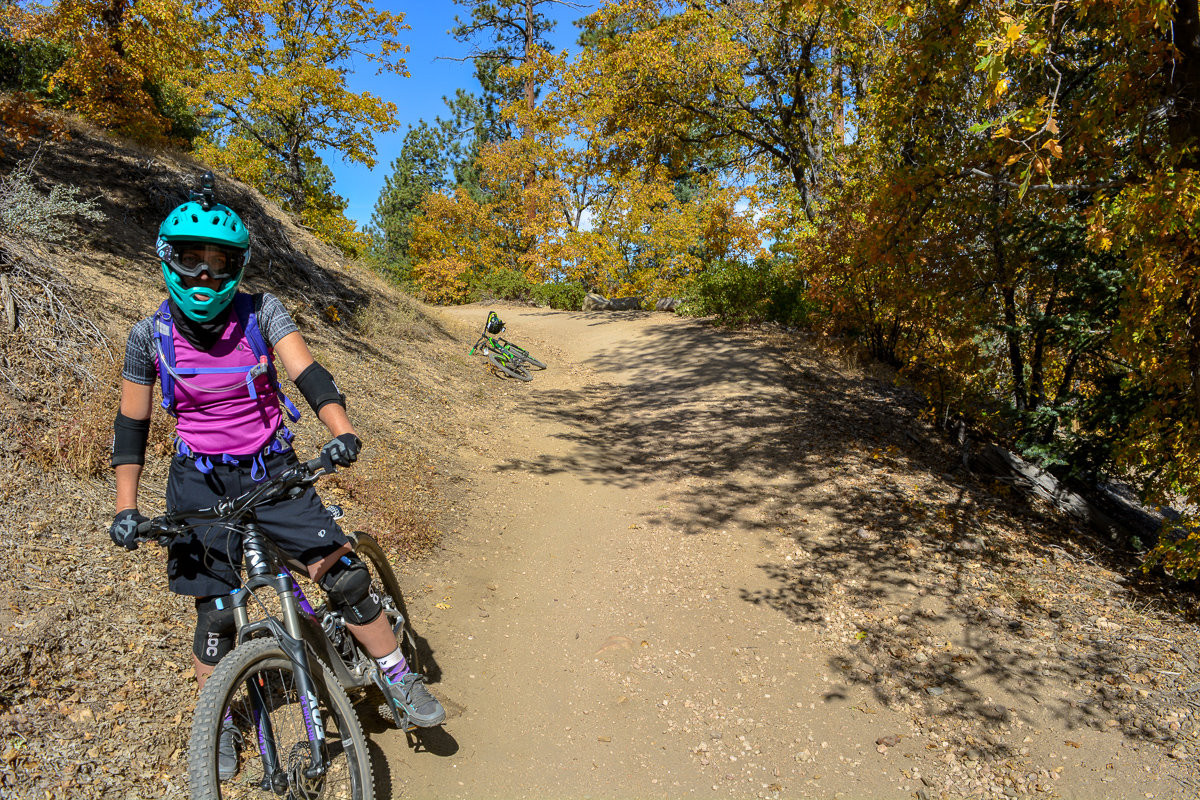Mountain biking is an exhilarating way to connect with nature, challenge yourself physically, and have a lot of fun. For women looking to hit the trails with confidence, having the right mountain bike outfit is essential. More than just looking the part, the correct gear enhances your comfort, safety, and performance, allowing you to focus on enjoying the ride. This comprehensive guide will cover everything you need to know to assemble the perfect Mtb Bike Outfit, ensuring you’re ready for any trail adventure.
Essential MTB Bike Outfit Components: From Top to Bottom
Choosing the right mountain bike outfit involves considering various elements, each playing a crucial role in your overall riding experience. Let’s break down the essential components from head to toe.
Head Protection and Comfort
Sweatband: When tackling challenging climbs or riding in warm weather, sweat can quickly become a nuisance, dripping into your eyes and obstructing your vision. A thin, comfortable sweatband is a simple yet highly effective solution. It wicks away moisture, keeping your forehead dry and your focus sharp on the trail ahead. Opt for breathable materials that are not too tight to avoid discomfort or headaches.
Sunglasses or Goggles: Eye protection is non-negotiable for mountain biking. The trails are full of potential hazards, from dust and dirt kicked up by your tires or other riders, to low-hanging branches and flying rocks. Investing in quality sunglasses or goggles is crucial to shield your eyes from these elements.
For most trail riding conditions, sunglasses with large lenses that provide ample coverage are ideal. Look for features like impact-resistant lenses and a secure fit that won’t slip during bumpy rides. For more aggressive downhill riding or very dusty conditions, consider goggles. Goggles offer a closer fit and better protection against fine particles and impacts. Clear lenses are suitable for wooded trails or overcast days, while tinted lenses are perfect for sunny conditions.
Helmet: A helmet is the most critical piece of safety gear for any cyclist, especially mountain bikers. Whether you’re a beginner or an experienced rider, a helmet is non-negotiable. For general trail riding, a standard mountain bike helmet provides excellent ventilation and protection. If you plan to tackle more technical trails, downhill sections, or jumps, a full-face helmet offers enhanced protection for your face and jaw. Some helmets even come with removable chin bars, offering versatility for different riding styles. Ensure your helmet fits properly and meets safety standards.
 Woman wearing a Bell Super 3R helmet while mountain biking.
Woman wearing a Bell Super 3R helmet while mountain biking.
Upper Body Comfort and Performance
MTB Jersey or Moisture-Wicking T-Shirt: Mountain biking is a physically demanding activity, and you’re bound to sweat. Wearing a shirt made from moisture-wicking fabric is essential for staying comfortable and dry. MTB jerseys and technical t-shirts are designed to pull sweat away from your skin, allowing it to evaporate and keeping you cool. Avoid cotton shirts, as they absorb sweat and can leave you feeling damp and uncomfortable.
MTB jerseys often have a looser fit for ease of movement and may include features like zippered pockets for small essentials or mesh panels for added ventilation. Tank tops made from moisture-wicking material can also be a good option for warmer climates, providing maximum breathability.
Backpack or Hydration Pack: Carrying essentials like water, snacks, tools, and extra layers is crucial for longer mountain bike rides. A backpack or hydration pack is the most convenient way to carry these items. Hydration packs are specifically designed for cycling, with a water bladder and hose system that allows you to drink on the go without stopping. They also offer storage space for other necessities.
Look for a pack that fits comfortably and securely on your back, with features like adjustable straps, breathable back panels, and compartments for organizing your gear. Consider the capacity you need based on the length of your rides and the amount of gear you typically carry.
Hand and Lower Body Protection and Comfort
Full-Fingered Gloves: Gloves are an often-overlooked but vital part of a mountain bike outfit. Full-fingered gloves provide several benefits: they protect your hands from abrasions in case of a fall, improve grip on the handlebars, and shield your hands from branches, thorns, and the elements.
Mountain bike gloves are typically made from durable yet breathable materials and often feature padded palms for added comfort and vibration absorption. Choose gloves that fit snugly but allow for good dexterity and handlebar feel.
MTB Shorts or Cycling Tights with Chamois: Comfort in the saddle is paramount for enjoying long mountain bike rides. MTB shorts or cycling tights with a chamois (padded insert) are designed to provide cushioning and reduce friction in the sensitive areas, preventing discomfort and chafing.
MTB shorts often have a baggier outer shell for a more casual look and added durability, while cycling tights offer a more streamlined fit and can provide warmth in cooler weather. Ensure the chamois is positioned correctly and made from a comfortable, breathable material. Experiment to find the style and fit that works best for your body and riding style.
Elbow and Knee Pads: For added protection, especially when riding more challenging trails, consider wearing elbow and knee pads. Pads can significantly reduce the severity of injuries in case of falls. Modern pads are designed to be lightweight and comfortable, allowing for a good range of motion while still providing effective impact protection.
Choose pads that fit snugly and securely without restricting movement. Look for breathable materials and ventilation features to prevent overheating. While pads might feel unnecessary on easy trails, they can provide valuable confidence and protection when you’re pushing your limits or exploring new terrain.
Tall Trail Socks: Socks might seem like a minor detail, but the right socks can make a noticeable difference in your comfort on the bike. Tall trail socks offer several advantages over short socks. They provide extra protection for your ankles from scrapes and abrasions, shield your lower legs from trail debris, and prevent your shoes from rubbing against your skin.
Choose socks made from moisture-wicking materials like merino wool or synthetic blends to keep your feet dry and comfortable. Look for socks with cushioning in key areas and a snug fit that won’t bunch up inside your shoes.
MTB Shoes: While you might be tempted to wear regular sneakers for mountain biking, dedicated MTB shoes offer significant advantages in terms of performance and safety. MTB shoes are designed with stiffer soles for efficient power transfer to the pedals and grippy outsoles for traction on various terrains, both on and off the bike.
There are two main types of MTB shoes: flat pedal shoes and clipless shoes. Flat pedal shoes have a sticky rubber outsole that grips flat pedals, providing a secure connection without being clipped in. Clipless shoes have cleats that attach to special clipless pedals, offering even greater pedaling efficiency and control. For beginners, flat pedal shoes are often recommended as they allow for easier foot placement and removal. As you progress, you might consider clipless pedals for enhanced performance.
 Woman wearing Five Ten mountain bike shoes and Fox women's shorts.
Woman wearing Five Ten mountain bike shoes and Fox women's shorts.
Optional Items for Enhanced Comfort and Protection
Beyond the essentials, several optional items can further enhance your MTB bike outfit and riding experience, depending on the conditions and your personal preferences.
Facemask or Headwear for Dust: In dusty conditions, especially when riding downhill or following other riders, a facemask or multifunctional headwear like a Buff can be invaluable. It prevents you from inhaling excessive dust and dirt, improving breathing comfort and protecting your respiratory system. These items can also provide warmth in cold weather or sun protection in hot weather.
Sun Sleeves: For sunny days, sun sleeves are a lightweight and effective way to protect your arms from sunburn. They are made from breathable, UPF-rated fabric and can be easily put on or taken off as needed. Sun sleeves also help prevent tan lines and keep you cool by wicking away moisture.
Arm and Leg Warmers: When riding in cool or changing weather conditions, arm and leg warmers offer versatile insulation. They can be easily added or removed mid-ride to adapt to temperature fluctuations. Arm and leg warmers are a great alternative to carrying multiple layers of clothing, providing warmth when needed without overheating.
Building Your Perfect MTB Bike Outfit
Creating the ideal MTB bike outfit is a personal process that depends on your riding style, local conditions, and budget. Start with the essential items, focusing on quality and fit. As you gain experience and ride in different conditions, you can gradually add optional items and refine your gear choices. Prioritize comfort, protection, and functionality to make the most of your mountain biking adventures. With the right MTB bike outfit, you’ll feel confident, comfortable, and ready to tackle any trail.
